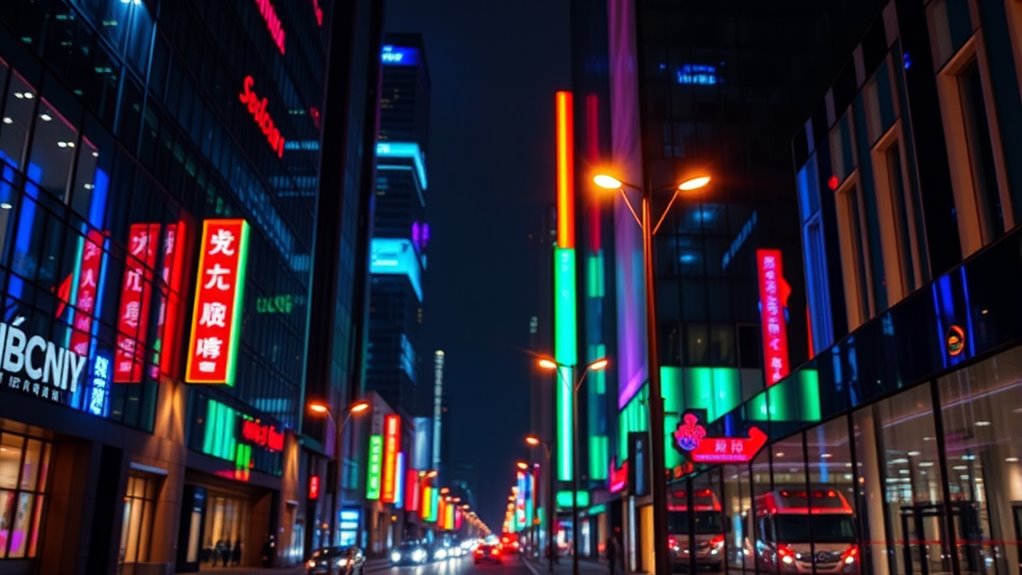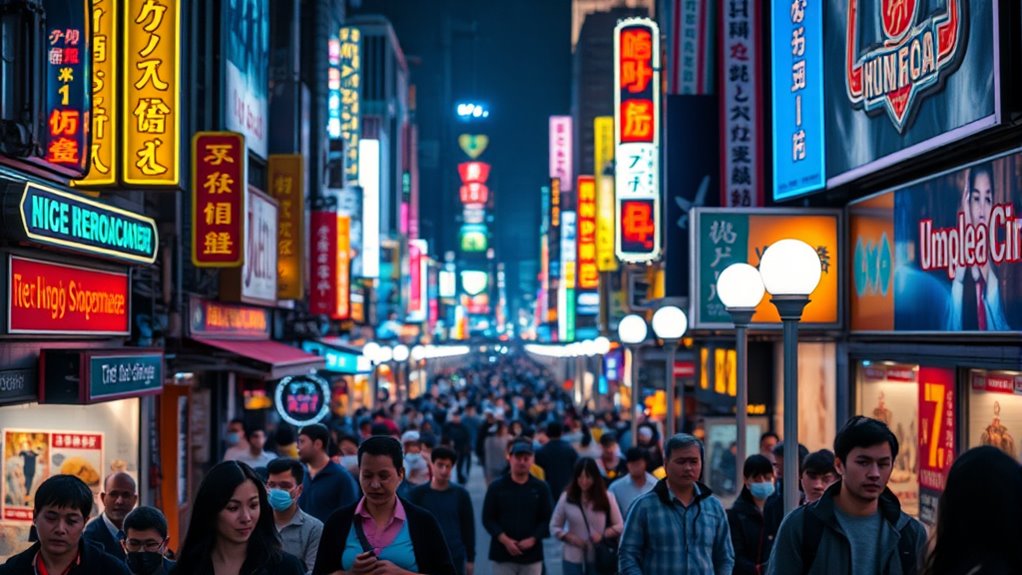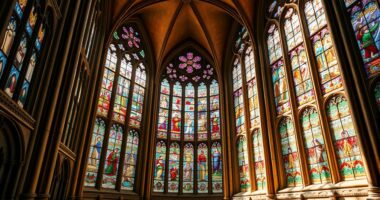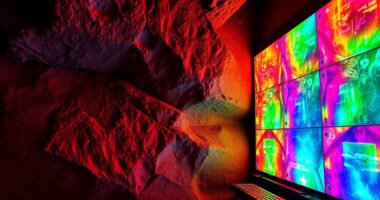Solid-state lighting, especially LEDs, has reshaped society by cutting energy use, lowering costs, and increasing urban safety. You benefit from brighter, long-lasting lights that make public spaces more inviting and reduce maintenance. LEDs also support greener policies and help fight climate change by decreasing carbon emissions. Their innovative design influences urban development and sustainability practices. To discover how these changes impact your everyday life and future, keep exploring the many ways LEDs have transformed our world.
Key Takeaways
- LEDs promote energy conservation, reducing carbon emissions and supporting sustainable urban development.
- They enhance city safety and aesthetics through high-quality, long-lasting illumination.
- Adoption of LEDs fosters societal awareness of environmental responsibility and energy-efficient practices.
- Lower maintenance and costs enable smarter infrastructure planning and urban growth.
- LED implementation influences policy shifts toward greener, more sustainable municipal and industrial standards.

Have you ever wondered how LEDs have transformed the way we live and work? These tiny lights have become a cornerstone of modern society, drastically altering our approach to illumination and energy consumption. LEDs are renowned for their energy efficiency, which means they use considerably less power compared to traditional lighting sources like incandescent or fluorescent bulbs. This not only reduces your electricity bills but also lessens the environmental impact, making lighting a more sustainable part of everyday life. As urban development continues to expand, LEDs play a crucial role in shaping smarter, more efficient cities. Bright, well-lit streets, public spaces, and commercial districts now rely on LED technology to provide high-quality illumination while consuming less energy. This shift has facilitated safer urban environments, allowing cities to extend their active hours without overwhelming their energy grids.
In the context of urban development, LEDs have revolutionized how cities grow and evolve. With their long lifespan and durability, LEDs decrease maintenance costs and minimize frequent replacements, which is especially beneficial for sprawling metropolitan areas. Cities no longer need to worry about constant bulb replacements or frequent repairs, freeing up resources that can be redirected toward other development projects. Furthermore, the compact size of LEDs enables innovative design opportunities, allowing architects and planners to create dynamic lighting schemes that enhance city aesthetics and functionality. This versatility contributes to the development of more vibrant, welcoming urban centers that attract residents, tourists, and businesses alike. Additionally, the widespread adoption of LEDs has increased awareness of the importance of preppy dog names and other themed names, reflecting a cultural shift toward personalization and style in various aspects of life.
Beyond infrastructure, LEDs influence societal behaviors and energy policies. Their efficiency encourages municipalities to adopt greener policies, aiming to reduce carbon footprints and meet sustainability goals. The widespread adoption of LEDs has set a precedent, inspiring industries and communities to prioritize energy-efficient solutions in their everyday operations. This collective shift supports a broader move toward smarter, more sustainable urban environments. Additionally, because LEDs emit less heat and consume less power, they help mitigate urban heat islands and reduce strain on energy grids during peak times.
Frequently Asked Questions
How Do LEDS Impact Global Energy Consumption?
LEDs considerably reduce global energy consumption by offering superior energy efficiency compared to traditional lighting. You benefit from lower energy bills and contribute to environmental conservation through decreased electricity use. Their long lifespan also means less frequent replacements, further cutting costs. As more people adopt LEDs, overall demand for energy drops, helping to mitigate climate change and promote sustainable development worldwide.
What Are the Environmental Effects of LED Disposal?
Imagine tossing a glowing gift into the trash, only for it to leak harmful substances into the environment. LED disposal causes environmental pollution due to the presence of hazardous materials like heavy metals. Recycling challenges make it hard to recover these components, risking soil and water contamination. To protect our planet, it’s essential you dispose of LEDs responsibly, supporting proper recycling methods to minimize environmental harm.
How Do LEDS Influence Urban Development and City Planning?
You influence urban development and city planning by supporting smart city initiatives that integrate LED lighting for energy efficiency and safety. LEDs help reduce light pollution, making cities more livable and environmentally friendly. As you plan urban spaces, consider how LEDs enable dynamic, adaptive lighting systems that improve public spaces and traffic management. Your choices can foster sustainable growth, enhance nighttime aesthetics, and promote smarter, more connected communities.
Are LEDS Safe for Human Health and Circadian Rhythms?
You might wonder if LEDs are safe for your health and circadian rhythms. Generally, they emit blue light, which can disrupt melatonin production if you’re exposed to it late at night. To protect your sleep, limit blue light exposure before bed, use dimmer lighting, or wear blue light glasses. This way, you reduce melatonin disruption and support your natural sleep cycle.
What Future Innovations Are Expected in LED Technology?
You can expect future LED innovations like smarter lighting systems that adapt to your needs, using advanced smart lighting controls. Color tuning will become more precise, allowing you to customize lighting for different moods and times of day. These improvements will enhance energy efficiency, improve your well-being, and integrate seamlessly with smart home devices, making your environment more comfortable and personalized.
Conclusion
So, thanks to LEDs, your nights are brighter than ever, yet somehow you’re more tired than before. You’ve gained convenience but lost the quiet darkness that once let you unwind. It’s funny how a tiny light can change everything—making life easier, but also a little more chaotic. In the end, you’ve got all this shine, but maybe, just maybe, you’re missing the darkness that once helped you find peace. Irony never looked so bright.









